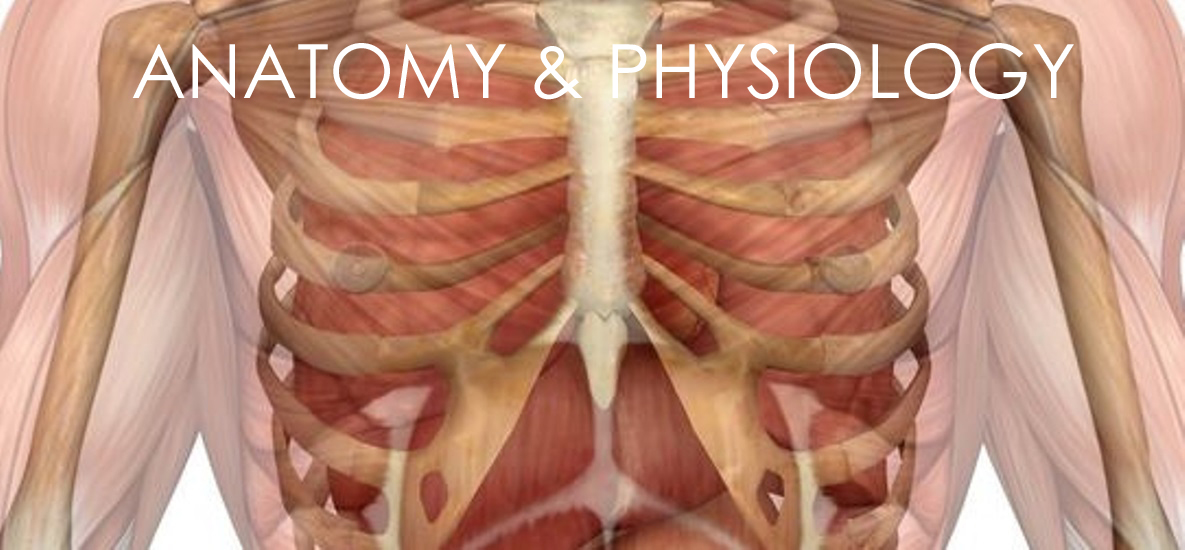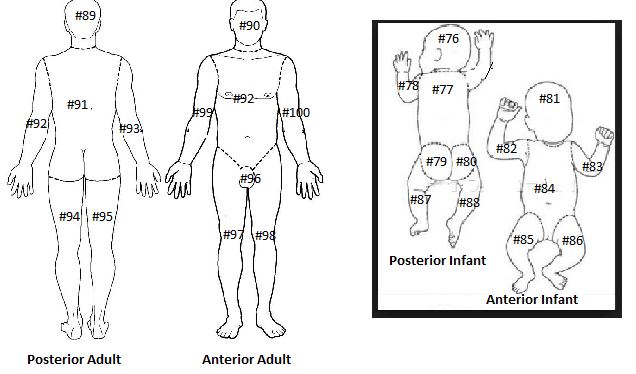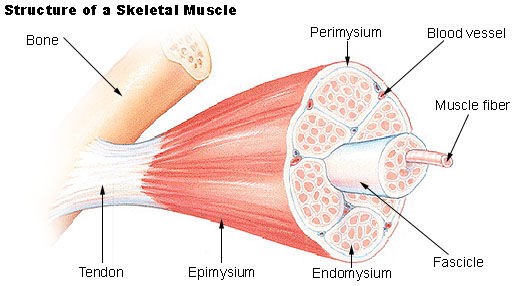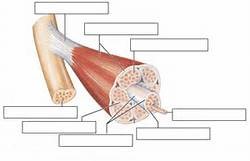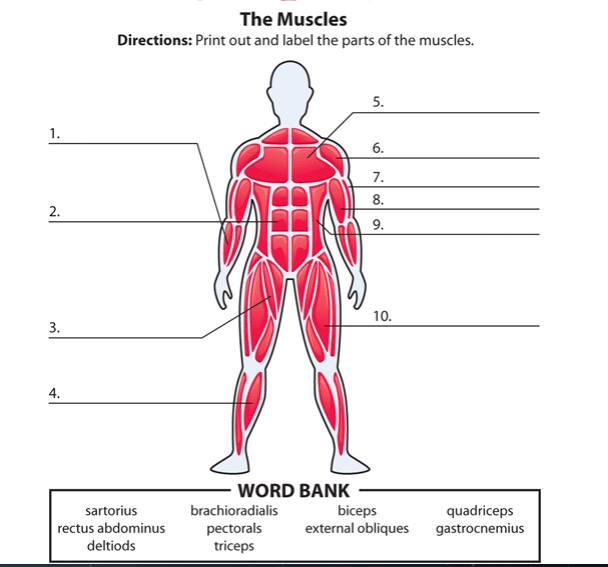Musculoskeletal Review-Extra Credit
Musculoskeletal Review-Extra Credit 10 Points-Must Be completed entirely for credit. Will be graded.
1. A muscle fascicle is a bundle of:
a) myofibrils
b) fibers
c) filaments
d) fascia
2. The connective tissue wrapping around a muscle that is continuous with tendons is the:
a) perimysium
b) endomysium
c) epimysium
d) sarcolemma
3. Which of the following is NOT a major function of muscle tissue:
a) produce body heat
b) body movements
c) controlling volume of hollow organs
d) storage of neurotransmitters
4. What is the smallest unit of contraction in muscle fibers:
a) sarcomere
b) sarcolemma
c) sarcoplasm
d) sarcofilament
5. In muscle tissue, neurotransmitter receptors are located:
a) in synaptic vesicles
b) in the synaptic cleft
c) on the motor neuron axon terminals
d) on the motor end plate
6. An action potential is:
a) a migrating region where the electrochemical potential of a membrane undergoes reversal
b) a flow of electrons from one cell to another
c) an electrically charged molecule such as sodium or potassium ions
d) a region where the electrochemical gradient of a membrane causes acetylcholine production
7. Acetylcholinesterase:
a) produces acetylcholine
b) is the acetylcholine receptor in muscle tissue
c) binds to the acetylcholine receptor in muscle tissue
d) degrades acetylcholine
8. Tetanus toxin causes convulsive paralysis by:
a) binding to acetylcholine receptor and blocking acetycholine
b) inhibiting acetylcholine esterase
c) causing massive acetylcholine release from motor neurons
d) blocking nearly all acetylcholine release from motor neurons
9. A person suffering from nerve gas exposure is given atropine to counteract the effects. Why?:
a) atropine will bind to nerve gas and help inactivate
b) atropine will block the sites where nerve gas acts
c) atropine blocks acetylcholine receptor which blocks the excess acetycholine lingering in the synaptic cleft
d) atropine will inactivate acetylcholine esterase and allow more acetylcholine to cross the synaptic cleft
10. Which of the following statements is FALSE:
a) all muscle tissue acts by contraction only
b) of the three types of muscle tissue, only skeletal is voluntary
c) superficial fascia holds skin to muscle
d) muscles use the skeletal system as leverage points by pushing against the bones to produce body movement
11) Which of the following is not part of the axial skeleton:
a) femur
b) sternum
c) mandible
d) sacrum
12) This hormone stimulates the breakdown of bone and the increase in blood calcium levels:
a) growth hormone
b) estrogen
c) parathyroid hormone
d) calcitonin
13) Which of the following cell types is responsible for synthesizing the organic component of cartilage matrix?
a. Chondrocytes
b. Osteoblasts
c. Osteocytes
d. Chondroclasts
e. None of the above
14) Spongy bone is also referred to as _____ bone.
A) cancellous
B) compact
C) cortical
D) fibrous
15) The _____ represents an area for growth in the length of a long bone.
A) diaphysis
B) epiphysis
C) epiphyseal disk
D) periosteum
16) The first vertebra is called the _____.
A) axis
B) atlas
C) cervical
D) dens
17) Which type of bone fracture occurs as an incomplete break in the bone?
A) greenstick
B) oblique
C) compound
D) simple
18) Which skull bone is not part of the cranium?
A) frontal
B) temporal
C) ethmoid
D) maxilla
19) There are a total of _____ bones in the entire skeleton.
A) 200
B) 80
C) 126
D) 206
20) The term for finger bones is _____.
A) carpal
B) phalange
C) metacarpal
D) tarsal
21) Another name for the wrist bones is _______________.
A) metacarpals
B) carpals
C) phalanges
D) tarsals
22) Which bone or bones does not/do not belong to the axial skeleton?
A) skull
B) ribs
C) hip bone
D) spinal column
23) The three major types of muscles in the body are:
A) Smooth muscle, sports muscles, and skeletal muscles
B) Smooth muscle, cardiac muscle, and skeletal muscle
C) Smooth muscle, running muscle, and face muscles
D) Smooth muscle, flexible muscle, and strength muscle
24) The muscle that pumps blood throughout your body is:
A) Skeletal muscle
B) Smooth muscle
C) Valentine muscle
D) Cardiac muscle
25) Which muscle helps move your shoulders?
A) Smooth muscle
B) Deltoid muscle
C) Quadriceps
D) Tendons
26) Which type of muscle is found in your digestive system?
A) Rectus abdominus
B) Cardiac muscle
C) Smooth muscle
D) Stomach muscles
27) What connects bones and muscles together?
A) Tendons
B) Ligaments
C) Glue
D) Cartilage
28) Which muscles are found on the front of your thighs?
A) Quadriceps
B) Biceps
C) Pectorals
D) Deltoids
29) When you make a muscle in your arm, you are flexing your:
A) Pectorals
B) Biceps
C) Deltoids
D) Rectus abdominus
30) The term for ankle bones is _____.
A) carpal
B) phalange
C) metacarpal
D) tarsal
True/False
Indicate whether the sentence or statement is true or false.
____ 31. Bones surround vital organs to protect them.
____ 32. Bones store most of the calcium supply of the body.
____ 33. The epiphysis is the long shaft of bones.
____ 34. Red marrow is mainly fat cells.
____ 35. The periosteum is necessary for bone growth, repair, and nutrition.
____ 36. The appendicular skeleton forms the main trunk of the body.
____ 37. The cranium is made of 14 bones.
____ 38. The maxilla is the lower jawbone.
____ 39. Foramina are openings in a bone that allow nerves and blood vessels to enter or leave the bone.
____ 40. The last two pairs of ribs are called floating ribs because they have no attachment to the thoracic vertebrae.
____ 41. The clavicles provide for the attachment of the upper arm bones.
____ 42. Hemopoiesis, or hematopoiesis, is the production of blood cells.
____ 43. There are 28 phalanges in the human body.
Multiple Choice
Identify the letter of the choice that best completes the statement or answers the question.
____ 44. The shaft of long bones is the ____.
a. diaphysis c. epiphysis
b. endosteum d. medullary canal
____ 45. The membrane that lines the medullary canal is the ____.
a. periosteum c. epiphysis
b. endosteum d. diaphysis
____ 46. Spaces, or “soft spots,” in the cranium that allow for the enlargement of the skull as brain growth occurs are ____.
a. fontanels c. sutures
b. foramina d. sinuses
____ 47. Areas where the cranial bones have joined together are ____.
a. fontanels c. sutures
b. foramina d. sinuses
____ 48. The vertebrae that are located at the waist are ____.
a. cervical c. thoracic
b. lumbar d. sacral
____ 49. The first seven pairs of ribs are called ____.
a. false ribs c. floating ribs
b. intercostal ribs d. true ribs
____ 50. Areas where two or more bones join together are ____.
a. foramina c. joints
b. sutures d. ligaments
____ 51. A bone break that pierces or ruptures through the skin is a ____.
a. depressed fracture c. simple fracture
b. greenstick fracture d. compound fracture
____ 52. A side-to-side or lateral curvature of the spine is ____.
a. scoliosis c. lordosis
b. kyphosis d. sacrosis
____ 53. On the dorsal surface of the body, floating ribs attach to ____.
a. lumbar vertebrae c. thoracic vertebrae
b. sternum d. nothing
____ 54. A fracture caused when bone fragments or splinters into more than two pieces is ____.
a. greenstick c. comminuted
b. spiral d. depressed
____ 55. A fracture caused when bone fragments or perforates the skin is referred to as ____.
a. closed c. Comminuted e. Choices b & d
b. open d. Complicated f. Choices b & c
Short Answer Questions 56-58 : Label the following diagram of the skeleton with the correct names for each of the bones.
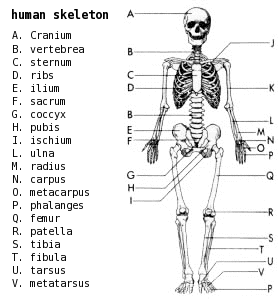
A. ____________________ N. ____________________
B. ____________________ O. ____________________
C. ____________________ P. ____________________
D. ____________________ Q. ____________________
E. ____________________ R. ____________________
F. ____________________ S. ____________________
G. ____________________ T. ____________________
H. ____________________ U. ____________________
I. ____________________ V. ____________________
J. ____________________
K. ____________________
L. ____________________
M. ____________________
59. List four functions of bones.
60. Name the main groups of bones that form the axial skeleton.
61. List 4 major function of Muscles?
62. Name two treatments for osteoporosis.
63) Keratinocytes are the predominant cells in the:
a) epidermis
b) papillary region of the dermis
c) reticular region of the dermis
d) subcutaneous layer
e) All of the above are correct
64) Nourishment to cells in the epidermis is provided by:
a) blood vessels running through the stratum basale
b) keratinocytes
c) blood vessels in the dermal papillae
d) bacteria that live in sebaceous glands
e) Both A and C are correct
65) Absorption of damaging light rays is the primary function of:
a) keratin
b) sebum
c) cerumen
d) melanin
e) Keratohyalin
66) The function of keratin is to:
a) make bone hard
b) make skin tough and waterproof
c) protect skin from ultraviolet light
d) provided added pigment to the skin of Asian races
e) provide nourishment to the epidermal cells
67) The epidermis is made up of:
a) dense irregular connective tissue
b) stratified squamous epithelium
c) areolar connective tissue
d) smooth muscle
e) All of the above are correct
68) “Goosebumps” occur due to:
a) over stimulation of secretion from sudoriferous glands
b) over stimulation of secretion from sebaceous glands
c) separation of the epidermis from the dermis
d) vasodilation of blood vessels in the skin
e) the action of arrector pili muscles as they raise hairs to an upright position
69) Sweat is produced by:
a) keratinocytes.
b) melanocytes.
c) ceruminous glands.
d) sudoriferous glands.
e) sebaceous glands.
70) The function of melanin is to
a) make skin tough and waterproof
b) Connect the epidermis to the dermis
c) Provide flexibility to skin
d) Provide nutrients to dying epidermal cells
e) Protect skin from ultraviolet light
71) Hair and nails are modifications of the
a) Melanocytes
b) Hypodermis
c) Sudoriferous glands
d) Epidermis
e) Dermis
72) Which of the following statements is TRUE regarding the epidermis?
a) It is keratinized.
b) Blood vessels travel from the dermis to the outer layers through special channels.
c) All of the cells in the epidermis reproduce rapidly.
d) It is made mostly of areolar connective tissue.
e) Both A and C are correct.
73) Striae are:
a) free nerve endings sensing touch.
b) the epidermal ridges that form fingerprints.
c) stretch marks resulting from tears in the dermis.
d) intermediate filaments connecting desmosomes.
e) areas of fat storage.
74) Synthesis of vitamin D begins with the activation of a precursor molecule in the skin by:
a) melanin.
b) keratin.
c) sebum.
d) UV light.
e) temperatures above 60degreeF in the external environment.
75) Cyanosis is indicative of:
a) lack of tyrosinase.
b) liver disease.
c) inflammation.
d) insufficient oxygen in blood.
e) patchy loss of melanocytes.
Label #76-100
76) ___________%
77) ___________%
78) ___________%
79) ___________%
80) ___________%
81) ___________%
82) ___________%
83) ___________%
84) ___________%
85) ___________%
86) ___________%
87) ___________%
88) ___________%
89) ___________%
90) ___________%
91) ___________%
92) ___________%
93) ___________%
94) ___________%
95) ___________%
96) ___________%
97) ___________%
98) ___________%
100) ___________%
Practice labeling the following:
All answers are in word bank. After reviewing the a clearer diagram,please note that the word bank is complete and accurate as presented
